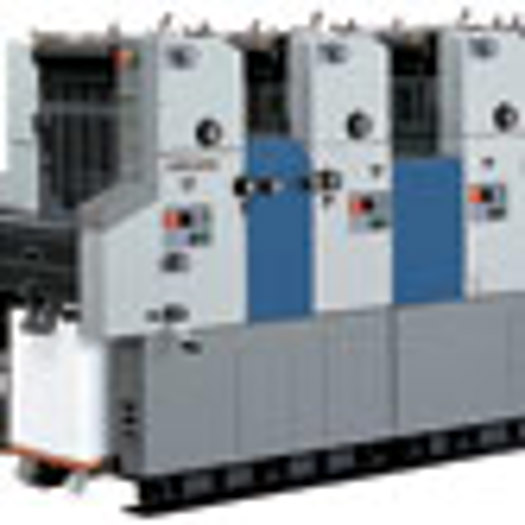Although launched at Ipex 2002, the design for the Ryobi 750 series dates back to 1998. At that time, the Japanese company was not producing any B2 presses itself, but rather was manufacturing parts for German press giant KBA. However, once that contract ended, Ryobi sought to break into the larger-format markets with its own B2 offering by adding B2 cylinders to the 750’s predecessor, the 680 to create a 15,000-sheets-per-hour (sph) B2 press.
According to Neil Handforth, sales and marketing director at Ryobi distributor Apex Digital Graphics, the 750 has plenty of strong selling points. It’s a robust machine with high specifications and fast makereadies as well as excellent solids and dot reproduction characteristics, he says.
The models in the 750 series are classified according to the number of units and configuration. Thus, a 10-colour perfecting press is designated as 7510P.
Over the years, Ryobi has updated the 750 significantly. When first launched, the press was offered with a maximum of six print units. Two years later, Ryobi made eight- and 10-colour configurations available, as well as four- and five-colour versions. The standard press can handle stocks of up to 600microns, although an extended 800microns version is available for packaging printers.
In addition, the press can also be specified with infrared or UV drying with a perfecting unit in any position, thanks to its modular design. Optional extras include chilled rollers and presets for paper size and impression pressure. Some
of the machine’s software updates include programmable
inking, a function that calculates the density of the job by examining the next job in the print queue before the run begins. It then adjusts the ink settings for the next piece of print while the first job is being completed.
Automation added
By Ipex 2006, fully automatic plate change became available on the machine; previously it had semi-automatic plate loading only. Apex says the fully automatic option has proved more popular, not surprisingly, with printers running eight- or 10-colour presses.
However, in the UK, most of the presses sold tend to be five- or four-colour plus coater models. That’s across B3 as well as B2, says Handforth.
Apex does buy secondhand presses, but only if traded as part payment for a new press. Prices on secondhand models vary according to the age of the machine, the number of impressions carried out and the configuration. A new five-colour press will cost around £442,000, depending on options. Spares can be sourced from Apex’s headquarters in Hemel Hempstead or from Hamburg, Germany.
We don’t have to rely on Ryobi Japan as we can source from mainland Europe, says Handforth. Apex offers service contracts that are tailored to the customer depending on their usage, impressions per year and whether they operate single or double shifts.
As this issue went to press there were four secondhand Ryobi 750s, all four- or five-colour models, for sale on PrintWeek’s sister site, PressXchange.com.
SPECIFICATIONS
Speed 15,000sph
Max printing area
SW type: 756x545mm
XLW type: 765x580mm
Substrate thickness
Standard 0.6mm
Optional 0.8mm
Feeder pile capacity 800mm
Delivery pile capacity 925mm
Footprint Ryobi 755: 8.2x3.0m
Weight 22 tonnes
Price
New Ryobi 755: £442,000
2000 Ryobi 685: £155,000
What to Look for
General wear and tear






